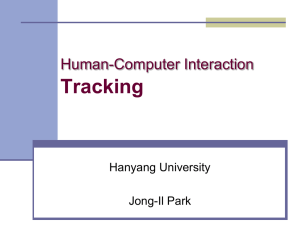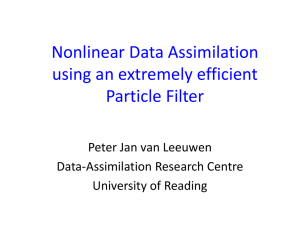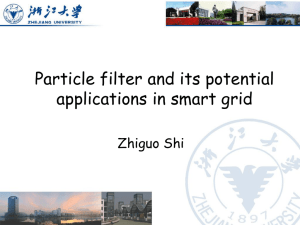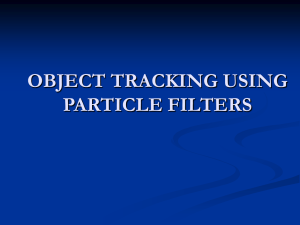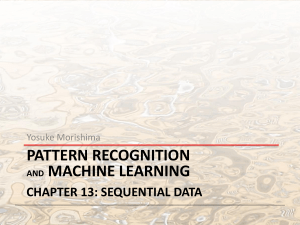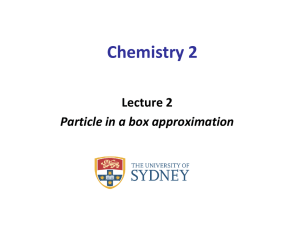- Lorentz Center
advertisement
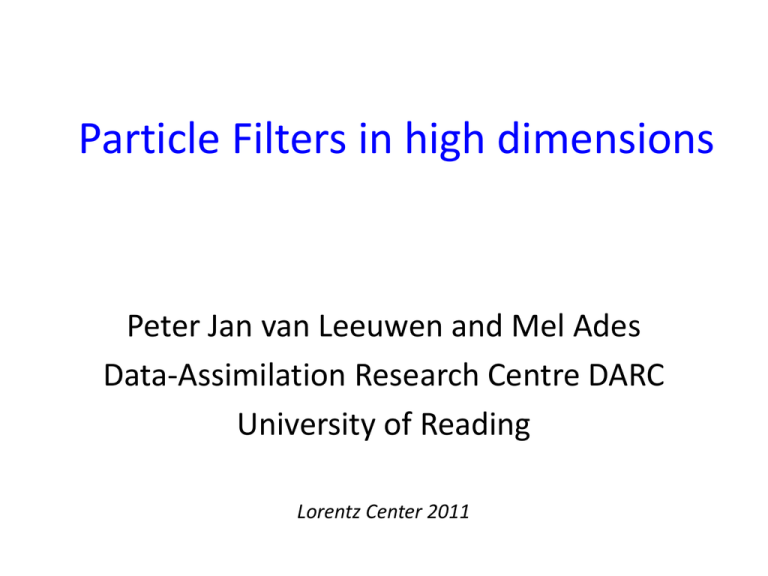
Particle Filters in high dimensions Peter Jan van Leeuwen and Mel Ades Data-Assimilation Research Centre DARC University of Reading Lorentz Center 2011 Data assimilation: general formulation Bayes theorem: Solution is pdf! NO INVERSION !!! Parameter estimation: with Again, no inversion but a direct point-wise multiplication. Nonlinear filtering: Particle filter Use ensemble with the weights. What are these weights? • The weight is the normalised value of the pdf of the observations given model state . • For Gaussian distributed variables is is given by: • One can just calculate this value • That is all !!! Standard Particle filter Not very efficient ! A closer look at the weights I Probability space in large-dimensional systems is ‘empty’: the curse of dimensionality u(x1) u(x2) T(x3) A closer look at the weights II Assume particle 1 is at 0.1 standard deviations s of M independent observations. Assume particle 2 is at 0.2 s of the M observations. The weight of particle 1 will be and particle 2 gives A closer look at the weights III The ratio of the weights is Take M=1000 to find Conclusion: the number of independent observations is responsible for the degeneracy in particle filters. Increased efficiency: proposal density Instead of drawing samples from p(x) we draw samples from a proposal pdf q(x). Use ensemble with weights Particle filter with proposal transition density Barotropic vorticity equation 256 X 256 grid points 600 time steps Typically q=1-3 Decorrelation time scale= = 25 time steps Observations Every 4th gridpoint Every 50th time step 24 particles sigma_model=0.03 sigma_obs=0.01 Vorticity field standard particle filter Truth Ensemble mean PF Vorticity field new particle filter Truth Ensemble mean Posterior weights Rank histogram: How the truth ranks in the ensemble Equivalent Weights Particle Filter Recall: Assume Find the minimum for each particle by perturbing each observation, gives Equivalent Weights Particle filter Calculate the full weight for each of these Determine a target weight C that 80% of the particles can reach and determine in such that This is a line search, so doable. Equivalent Weights Particle Filter • This leads to 80% of the particle having an almost equal weight, so no degeneracy by construction! • Example … Gaussian pdf in high dimensions Assume variables are identically independently distributed: Along each if the axes it looks like a standard Gaussian: However, the probability mass as function of the distance to the centre is given by: d=100 d=400 r in standard deviation d=900 The so-called Important Ring Why? In distribution Fisher has shown So we find Importance Ring Experimental evidence, sums of d squared random numbers: r d Given this what do these efficient particles represent??? Conclusions Particle filters with proposal transition density: • • • • solve for fully nonlinear posterior pdf very flexible, much freedom scalable => high-dimensional problems extremely efficient • But what do they represent? We need more people ! • In Reading only we expect to have 7 new PDRA positions available in the this year • We also have PhD vacancies • And we still have room in the Data Assimilation and Inverse Methods in Geosciences MSc program
